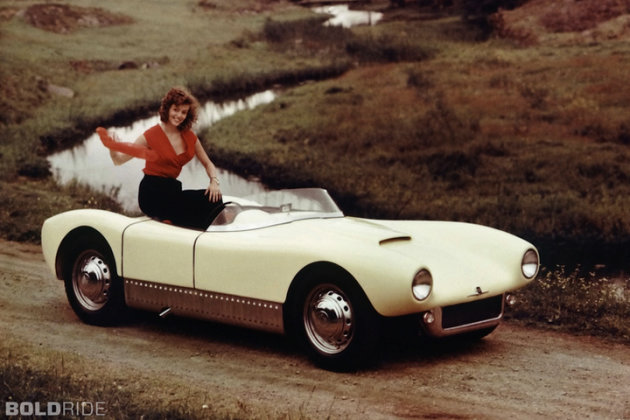YAHOO AUTOS
Saab had only started building automobiles just after the Second World War, but already by 1954, one of the company’s engineers, Rolf Mellde, had sketched out an open two-seater. Saab wasn’t all that interested in the idea, but Mellde and a few other Saab engineers kept at it in their spare time, building a prototype of his sports car in a barn about 40 miles from Saab headquarters in Trollhättan.
The diminutive car featured a lightweight alloy box-type monocoque chassis derived from aircraft design and was powered by Saab’s proven 748 cc two-stroke, three-cylinder engine. It made almost 60 horsepower at 5,000 rpm and would provide the car with a top speed of around 120 miles per hour.

Although the number was already used by a Saab aircraft project, the experimental car was dubbed the 94. It was also called the Sonett, which derives from a Swedish phrase that roughly translates to “how neat it is.”
The original Sonett would prove to be a dead end for Saab, but the name and sports car concept were revived in the following decade for what would become one of the most beloved cars Saab ever built.
After extensive tests of the car without bodywork, Saab corporate was convinced of the car’s potential for racing and sales and an advanced (for the mid-1950s) fiberglass body was stretched over the prototype, which weighed in at well under 1,500 pounds.
Another reason for Saab’s enthusiasm for the Sonett project was the popularity of sports cars in the US market, which Saab was planning to break into in the spring of 1956.

By 1957, Saab planned for 2,000 Sonetts to to be built per year, likely with a metal body and folding roof with actual production outsourced to a company like Jensen in the UK.
Just before 1958, however, rules changes for the kind of racing the Sonett was intended for discouraged Saab enough to halt the plans for a sports car and keep building (and racing) the more pedestrian automobiles they were already doing well with. In the end, only six Sonett Is were made, including the aluminum chassis prototype and the other five experimental cars.
Most if not all of the original Sonetts are still intact and were either retained by Saab or made their way into private collections. With an advanced chassis, quirky two-stroke powerplant, diminutive size and over 100 horsepower per ton, the Saab Sonett I would have been quite the sight on the racing scene in the 1950s. It’s a shame we never got to see quite how well it would have done.


No comments:
Post a Comment